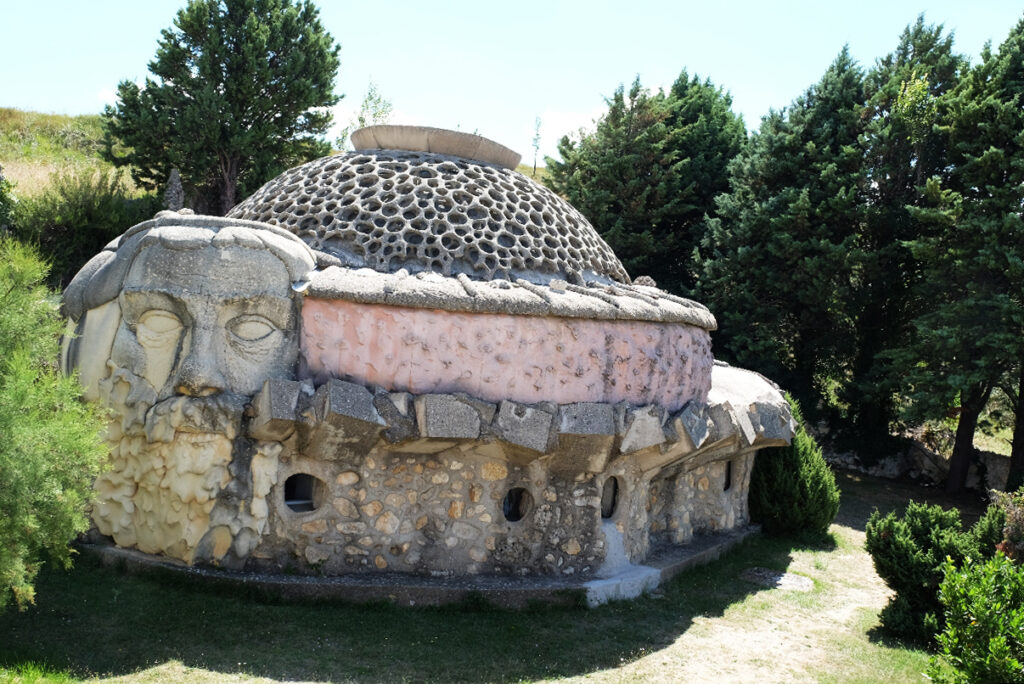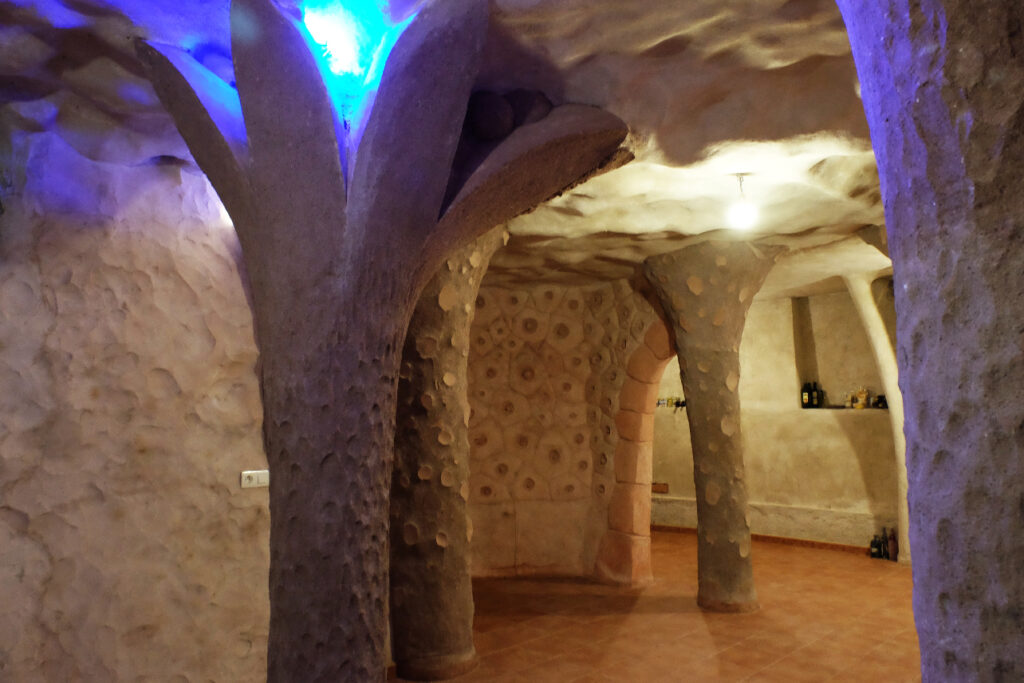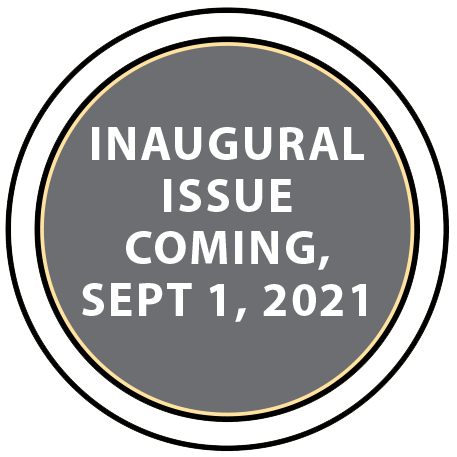
¡VAMOS A ESPAÑA!
Exploring Juan Carlos Salazar Gutiérrez’s Casa-Museo Salaguti in Sasamón, Burgos, northwestern Spain
Based in northern California, where she taught art history and ran the campus gallery for many years at San José State University, while also serving as the executive director and curator of SPACES Archives, a nonprofit organization dedicated to documenting and advocating for artist-built environments on a global scale, Jo Farb Hernández has spent almost five decades researching environments created by visionary self-taught artists.
In particular, she has concentrated on such site-specific works across Spain’s varied terrain for over 20 years. Her book Singular Spaces: From the Eccentric to the Extraordinary in Spanish Art Environments was published in 2013; now she is working on a new volume that will examine 100 more unique, artist-made places in Spain. Exclusively for brutjournal, Hernández has invited us to dip into her notebooks, savor her revealing field work, and share her fascinating discoveries.
by Jo Farb Hernández
Far from the coasts and the moderating, temporal effect of their littoral waters, Burgos Province has one of the coldest and longest winters of Spain, set off by short, hot summers. Like many places in the high meseta interior of the Autonomous Community of Castilla y León, in the northwest of the country, Burgos is a dry land with a sparse and declining population.
Here, though, there is room to move and to think, and to consider one’s place among the infinite spaces of the broader universe. The city of Burgos, the capital of the province, became the capital of the Kingdom of Castilla in the 11th century, and its impressive Gothic cathedral, consecrated in 1260, is now a UNESCO World Heritage Site.
Carlos Salazar Gutiérrez, who has combined the last names of his father and mother to create his artistic moniker, “Salaguti,” was born on July 12, 1944, in the small village of Sasamón, some 33 kilometers (approximately 20 miles) from the provincial capital. With only around 1000 residents, Sasamón nevertheless remains distinctive as a result of its significant historical monuments and the production and exportation of its popular sheep’s cheese.
Salaguti’s mother was a dressmaker, and his father was a carpenter and builder; even as a young boy, Carlos liked to draw and make things, often working in his father’s workshop and taking advantage of his tools and raw materials. At the age of 14, he continued on to secondary school, a step that was somewhat unusual during a period when most children terminated their formal education after completing primary school.
Today, Salaguti remembers that, in an early acknowledgment of his artistic talent, his teachers asked him to make certain drawings so that the younger children could copy them. (At his school, there were no formal art classes in the elementary grades.) In 1962, he won a grant to study at the Escuela Superior de Bellas Artes de San Fernando in Madrid, an illustrious academy that boasted Francisco Goya as one of its earlier directors and such accomplished alumni as Pablo Picasso, Salvador Dalí, Oscar de la Renta, and Fernando Botero.
However, when he arrived at the school, despite the grant, his admission was suspended, as he failed one portion of the entrance exam. Although the academy’s administrators encouraged him to re-apply the following year, this snafu made him realize that this school — or, indeed, any other school — was not for him, and he dropped out before he began. The young artist was still ambitious, though, and he sought and found work in a sculpture-conservation studio in Madrid, where he became one of its primary restorers handling figurative works.
For a while, he also mounted exhibitions of some of his personal sculpture at galleries in Madrid and also in Paris, gaining some public and financial success, but he quickly became disillusioned not only by the size of art dealers’ sales commissions, but also by their attempts to influence the development of his work in ways that diverged from the path he wanted to follow. He became increasingly unhappy in Madrid and returned home to Sasamón, where the conservation studio discreetly continued to pass on its commissions to him.
After being discharged from mandatory military service when he was in his early twenties, Salaguti knew it was time to concentrate on his future. Even then, still at a young age, his plans included the construction of a house, museum, and studio that would become his artistic work even as it would simultaneously showcase his artistry within its walls. His aim was to create an architectural sculpture and/or a sculptural building. In 2016, he told the maker of a short film about his work that he had felt a “spiritual need” and an “obligation” to channel his “restlessness” into a tangible expression of his personal philosophy, inspired by his natural surroundings and what he referred to as “the search for the beyond.”
Although he had an initial concept — a grand plan — for the structure he wanted to build, he worked on it slowly, and modified his scheme as his thoughts about the site changed, and the materials and the practicalities of the site themselves challenged his preconceived thoughts about how it would develop. Soon, on a barren hectare of land he had inherited from a great aunt, which was located on the outskirts of Sasamón, Salaguti began building what would become his “Casa-Museo” (“House-Museum”), layering bricks, stone, and concrete over a steel infrastructure. (Today, it is also known as the “Casa de la Tortuga,” or “Turtle House” in English.)

In the meantime, in 1971, he married a local woman, with whom he would have three children; eventually, the artist’s entire family moved out to the site, but when it came time for his children to attend school, everyone moved back to the town. Salaguti spent those early days going back and forth between the construction site and the village; today, he lives there alone, full-time, in his art environment.
In 2012, in a broadcast on a regional television station, Salaguti said, “The first question is: Why am I here? If I had been in a neighborhood in Madrid or in Paris, I would have been in a completely different economic situation. So, look, why here? Why have you isolated yourself? But, basically, it is completely the opposite. We are isolated from people but in contact with the universe. If you are in a huge city, you find yourself alone.”

Teaching himself as he began to build his own “universe,” he developed two ways to work with reinforced concrete, his primary medium for both construction and sculpture. The first was to create a clay form; because clay is elastic and easily manipulated, it lends itself to great expressivity. He then layered plaster over the clay base, creating a mold; after it dried, he cut it in half and scooped out the clay base, leaving room for wet concrete mortar to be poured into the plaster mold. In this process, as the mortar mixture dries, it shrinks. Later, it can easily be released from its mold. This has been Salaguti’s chosen technique for creating multiples of the same shape or form.
His alternative approach is to work directly with wet concrete mortar. The drawback to this process is the relatively short period of time it allows for the manipulation of the medium: at first it may be too wet to form, and then the stage when it is easy to handle passes quickly, as the mortar continues to dry.
Inspired by both the intimacy and complexity of nature, Salaguti felt free to mix painting, sculpture, drawing, and architecture as his work evolved. This path, for him, was effortless and unforced. From the earliest stages of the Casa-Museo project, stone, concrete, bricks, and steel became its creator’s primary media for crafting both interiors and exteriors, and they remain so today, along with marble, wood, bronze, and glass, the work evolving in tandem with his own growth and development. In an interview conducted in 2016 for a website about local artists, Salaguti said, “This work expands in time and space; it is like life itself, it continues evolving and adapting.”

Entering the art environment’s hillside property from a higher elevation, one finds a complex with two main buildings, several outbuildings, and a range of fruit and shade trees, all of which Salaguti built or planted himself on this once rather desolate and wind-swept land. Circling around the three-story Casa-Estudio (“House-Studio”), visitors reach what is now the Casa-Museo. There, they come face-to-face with a high-relief self-portrait of the bearded artist, which stands about four meters, or thirteen feet, tall.
In creating his monumental sculptural buildings, Salaguti’s goal was to find and express his own artistic voice through the realization of a range of two- and three-dimensional works that thematically explore the liminal spaces between birth and death, the terrestrial and the spiritual, the present and the future, the simple and the complex, and the natural and the technological. Undertaking an intense period of self-study, he metaphorically worked through the lens of a world he designed for himself alone, as well as, simultaneously, for the public at large.

While not uneducated or uninterested in the work of other artists or trends — the artist is particularly attracted to the sculpture of ancient Greece and Rome — Salaguti cherry-picks what appeals to him and what serves him as he moves toward the creation of hi own artistic universe. He consciously aims to disconnect the works that explore and reveal this personal world from the marketplace, thereby precluding a need for anyone else’s aesthetic approval or financial support.
His architectural-sculptural productions are Salaguti’s personal visual adventures and, as such, are almost startlingly free of any social, political, religious, or cultural implications. He assembles tem in an improvisational manner, without detailed blueprints or even, in most instances, the use of preliminary gestural sketches.
“I wanted to create a little paradise for myself,” Salaguti told a local magazine produced in Villorejo, a village to the east of Sasamón, in 2016. “I don’t really know what I have done, but it is here, in this space. If everyone in the world would have done the same, the world would not have problems. Because if a person makes his own world, like this one, no one will envy anyone. This is the great thing about it, that everyone makes his own, and everyone is happy.”

Salaguti has become recognized as the emblematic artist of little Sasamón, what with his numerous public artworks visible and cared for, and signage in town directing visitors to the Casa-Museo. On the municipality’s website, his work is recognized with the same respect afforded to local historical churches and the remains of ancient Roman monuments — extremely rare acknowledgment for an art environment produced by a fiercely independent, self-taught architect and builder. Yet he claims that he does not particularly like having visitors, perhaps because they take time away from his work, and at the large metal gate blocking the entrance to his site, he has posted a large sign prohibiting vehicles.
In the Villorejo magazine article a few years ago, Salaguti spoke of his life’s work and noted, “For me, I’m always just starting. There is always something new. It is about having a goal, and despite the fact that the imagined projects might be unattainable, I feel this necessity to continue making new things.”
Reference sources cited above include Enrique Ugarte’s short film “El Dalí Castellano – Salaguti” (YouTube, 2016); an interview with Salaguti that appeared on Castilla y León’s radio-television channel on January 18, 2012; and Luis Carlos Rodrígo Mata’s article, “Salaguti – Un artista universal en nuestros páramos,” which appeared in issue 16 of Villorejo (2016), a magazine published in Villorejo, Burgos Province, Spain.


